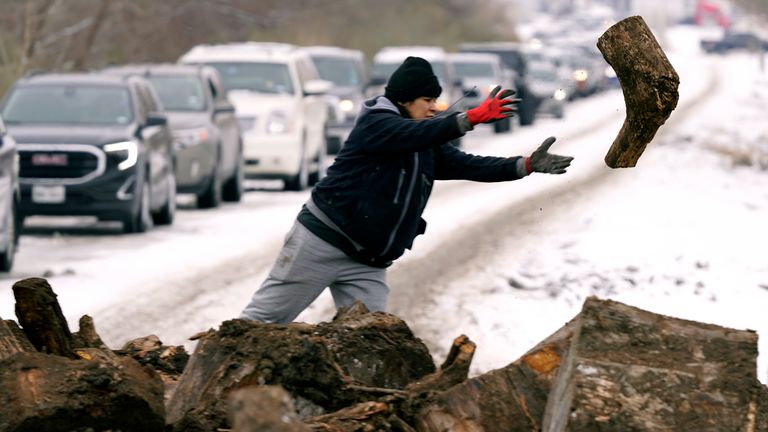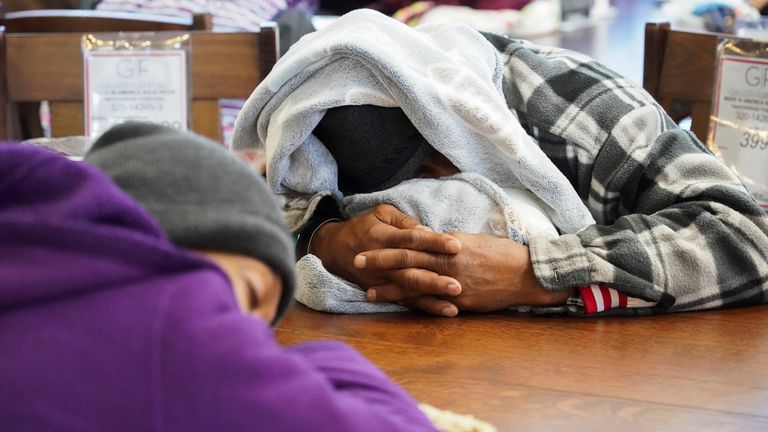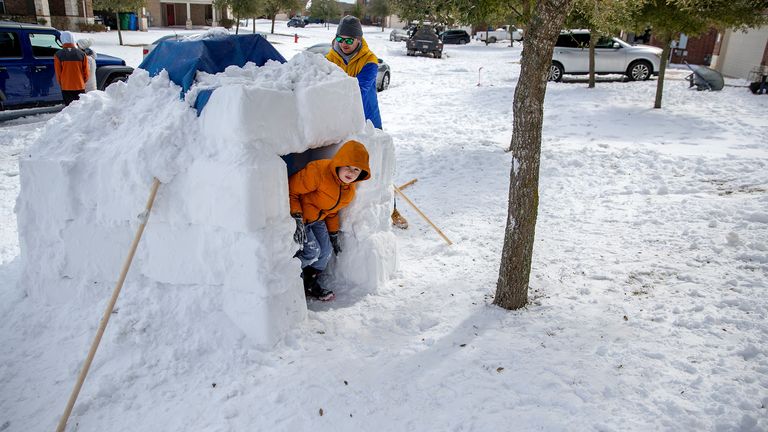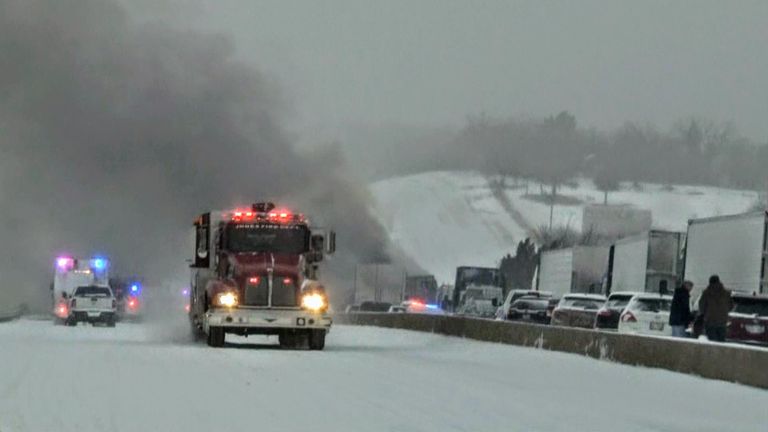The US winter storm has killed 32 people and left 3.4 million struggling to stay warm without power.
The latest storm front is expected to move from parts of Texas, Arkansas and the Lower Mississippi Valley to the Northeast on Thursday.
“There’s really no letup to some of the misery people are feeling across that area,” said Bob Oravec, lead forecaster with the National Weather Service.
More than 100 million people live in areas covered by winter weather warnings, watches or advisories, the weather service said.
Scientists say the polar vortex, a weather pattern that is usually seen in the Arctic, is increasingly spilling into lower latitudes and staying for longer, which is partly due to global warming caused by humans.
The freezing weather also threatened to disrupt the nation’s COVID-19 vaccination effort, with the government warning delays in vaccine shipments were likely.
Utilities from Minnesota to Texas and Mississippi have implemented rolling blackouts to ease the burden on power grids straining to meet extreme demand for heat and electricity.
More than 3 million customers remained without power in Texas, Louisiana and Mississippi, more than 200,000 more in four Appalachian states, and nearly that many in the Pacific Northwest, according to poweroutage.us, which tracks utility outage reports.
The worst U.S. power outages by far have been in Texas, where officials requested 60 generators from the Federal Emergency Management Agency and planned to prioritise hospitals and nursing homes. The state opened 35 shelters to more than 1,000 people, the agency said.
Vice President Kamala Harris addressed those who had lost power during a live interview Wednesday on NBC’s Today programme: “I know they can’t see us right now because they’re without electricity, but the president and I are thinking of them and really hope that we can do everything that is possible through the signing of the emergency orders to get federal relief to support them.”
The weather also caused major disruptions to water systems in the Texas cities of Houston, Fort Worth, Galveston, Corpus Christi and in Memphis, Tennessee, and Shreveport, Louisiana, where city fire trucks delivered water to several hospitals and bottled water was being brought in for patients and staff, KSLA News reported.
In Houston, residents were told to boil their water – if they had power to do so – because of a major drop in water pressure linked to the weather.
In Abilene, Texas, firefighters tried to extinguish a house fire this week, but due to low water pressure, “they had to watch that house burn,” City Manager Robert Hanna said.
Travel remains ill-advised in much of the United States, with roadways treacherous and thousands of flights cancelled. Many school systems delayed or cancelled face-to-face classes.
Authorities said a fire that killed three young children and their grandmother in the Houston area was likely to have been caused by the fireplace they were using to keep warm.
In Oregon, authorities confirmed Tuesday that four people died in the Portland area of carbon monoxide poisoning.
At least 13 children were treated for carbon monoxide poisoning at Cook Children’s Medical Centre in Fort Worth and one parent died of the toxic fumes, hospital officials said.
Temperatures were expected to rise above freezing in Texas by the weekend.








